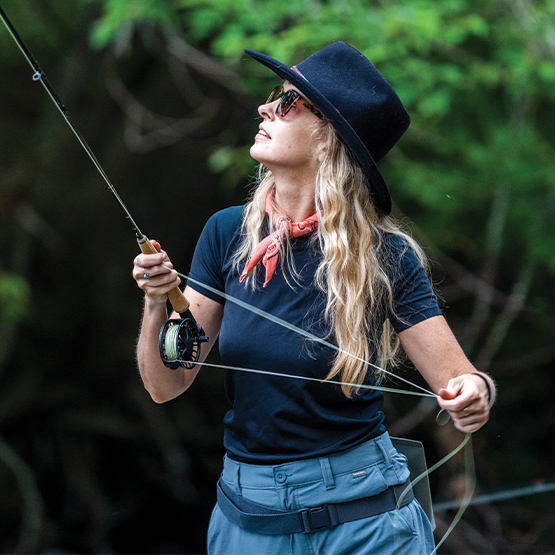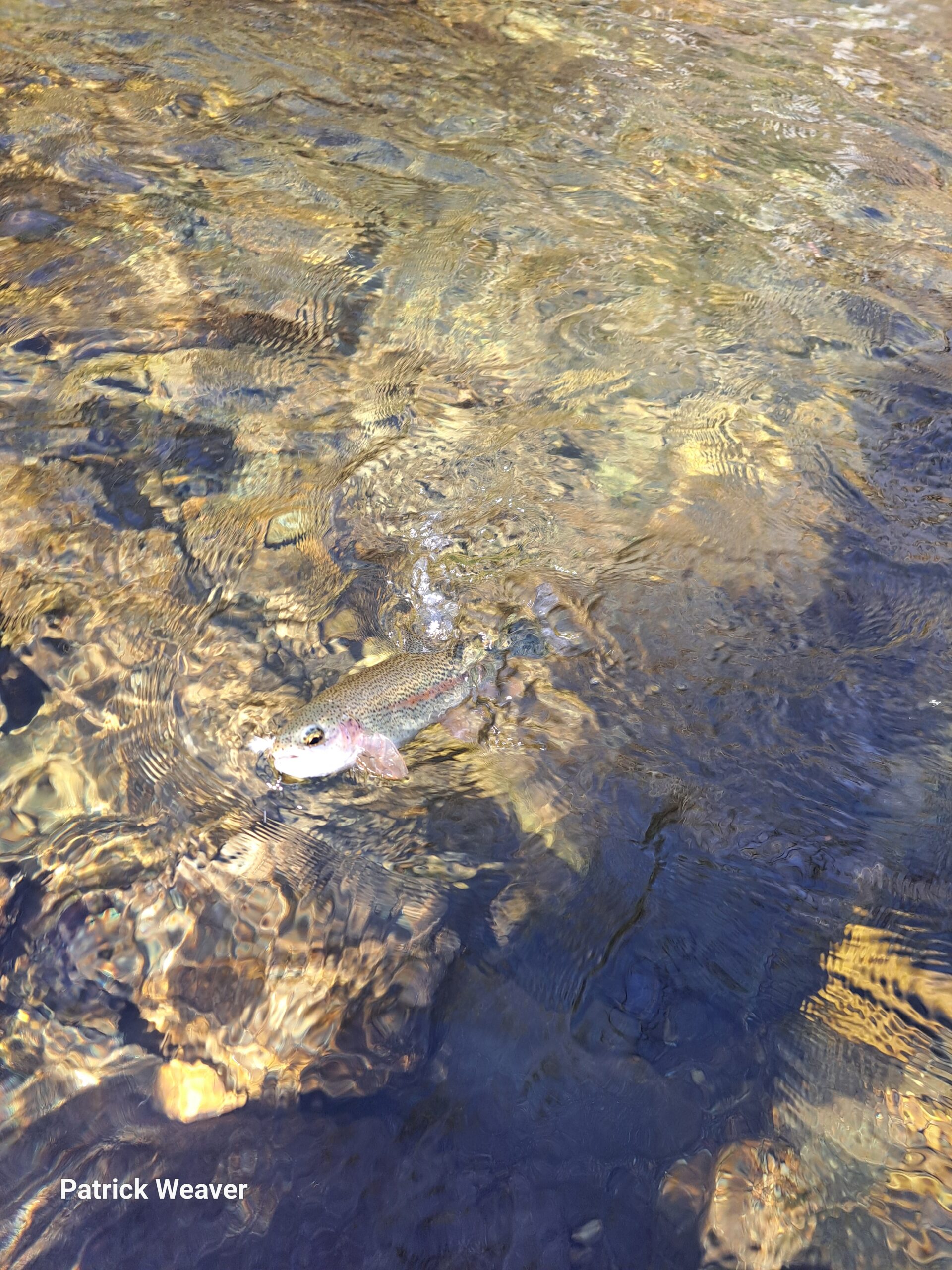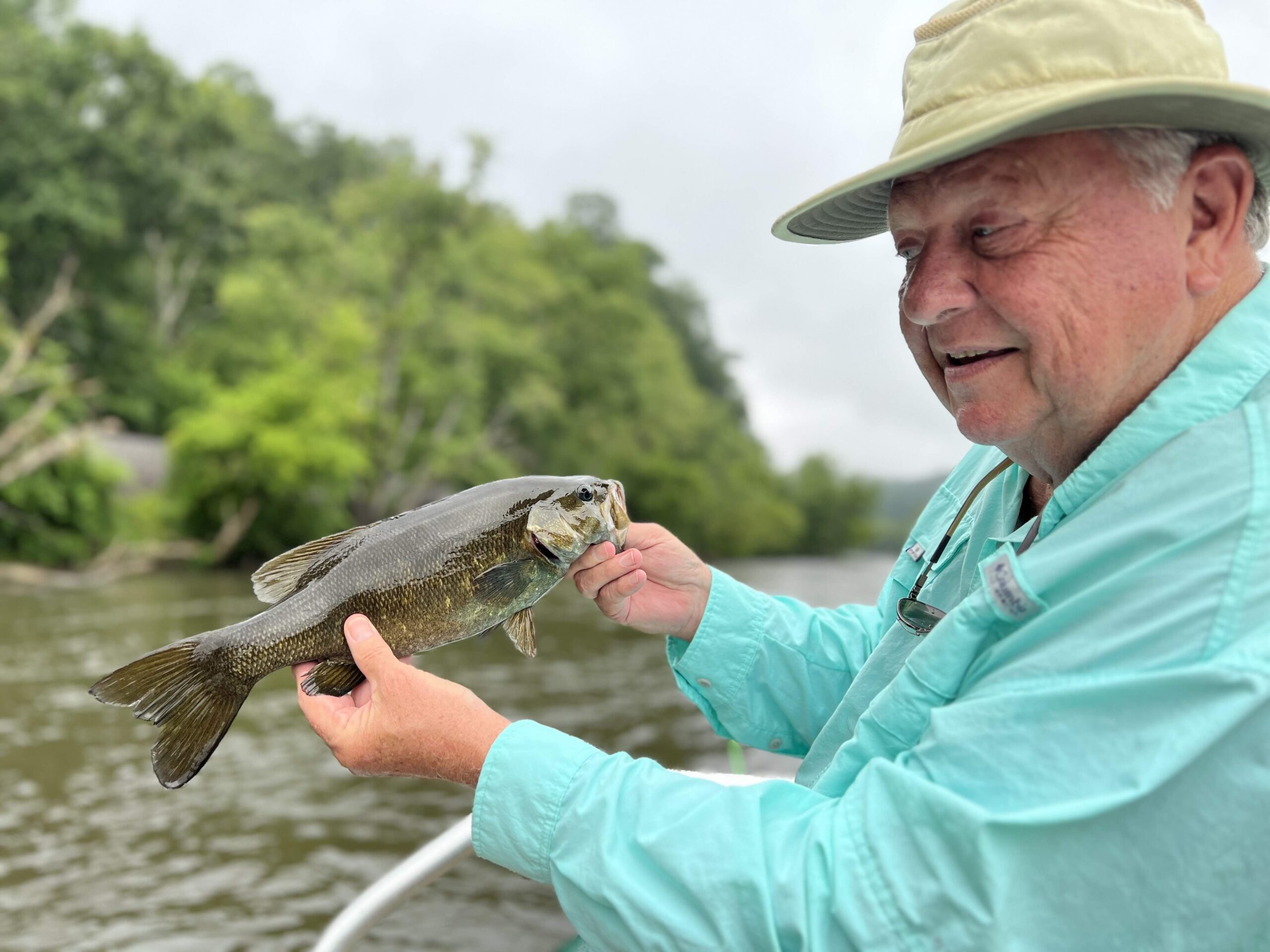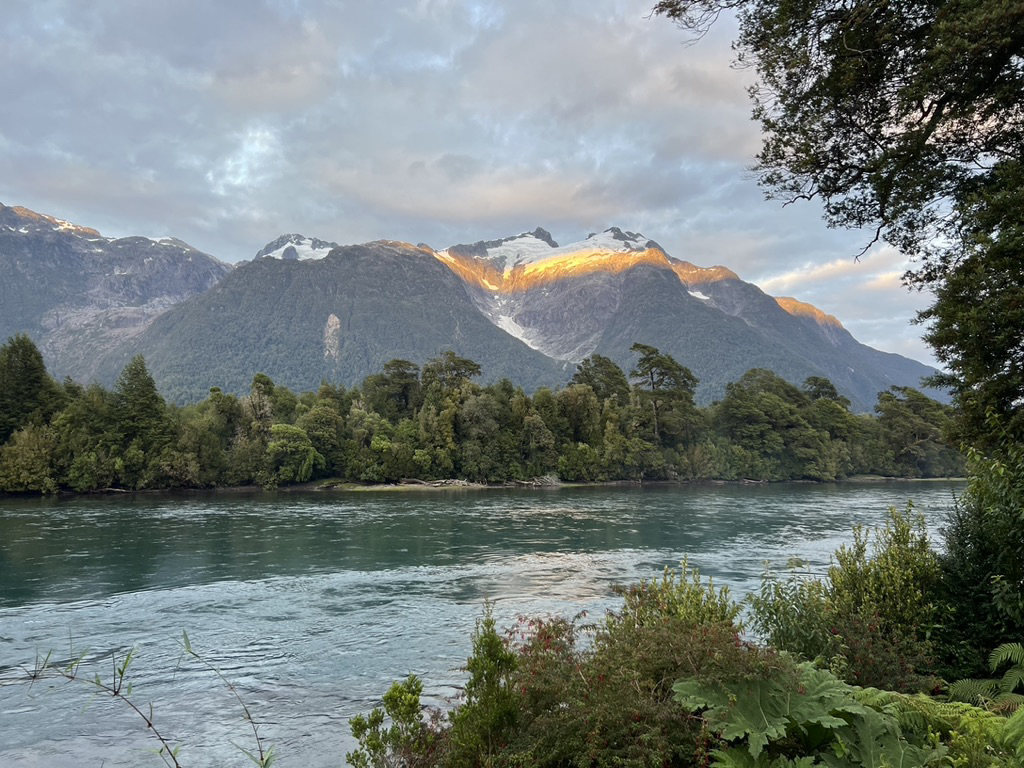Top Davidson Tips
All Ages | All Skill Levels | Private & Group Trips | Private & Public Water
One of the Top Trout Streams in the Southeast…Technical and Beautiful
A lot of people, as it turns out. Because of its high trout densities and easy access, the Davidson is one of the most heavily fished streams in the Southeast. On most summer days, there’s hardly a vacant pull-off to be found along U.S. Highway 276, which parallels the river for 4.5 miles in the Pisgah National Forest. Add picnickers, tubers, canoeists, kayakers, swimmers, and other tourists, and the Davidson can become quite a circus. Yet amazingly, the river seems to keep pace with the pressure, thanks to catch-and-release regulations and above-average productivity. Between 1990 and 1993, the North Carolina Wildlife Resources Commission (NCWRC) sampled several sites on the river and found an average of 64 browns, 216 rainbows, and a handful of brook trout for every acre of river. What explains such fecundity in a freestone stream? “It may be that the parent soils are more productive than other streams in similar-sized watersheds,” says regional fisheries biologist Scott Loftis.
While the Davidson’s fertility can’t compare to that of a Pennsylvania spring creek or a Western tailwater, the fishing can be just as challenging as on those venues. Ultra-clear water, constant fishing pressure, and educated trout make this one river where the odor of skunk pervades the air all season long. Fortunately, the Davidson offers many distractions for the defeated: banks of flowering rhododendrons, blazing fall foliage, chattering kingfishers, and giant hellbender salamanders underfoot.
Fly-fishing tips for Davidson River, NCFrom its high-gradient headwaters below the Blue Ridge Parkway down to its silty, sluggish pools near the town of Pisgah Forest, the Davidson offers something for every taste: roll-casting attractor dries to small, native brookies; micro-nymphing for overfed, educated rainbows; dredging Bunny Leeches for record-size browns. Those who cherish solitude can hike into the river’s remote headwaters, while the more sociable can fish elbow to elbow with other fly anglers, sharing patterns and advice.

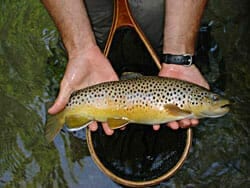
The Upper River
About 14 miles of the river, from its headwaters to Avery Creek, are managed under catch-and-release, fly-fishing-only regulations. Much of this stretch is paralleled by U.S. Highway 276 and Forest Road 475-A.
The Davidson begins as a series of springs and seeps more than 4,000 feet above sea level, gradually coalescing into six main tributaries: Laurel Fork, Shuck Ridge Creek, Right Fork, Daniel Ridge Creek, Cove Creek, and Caney Bottom Creek. Though hemmed in by thick rhododendron, birch, and hemlock, all of these feeders offer fun summer fishing for small, wild rainbows (and a few brookies up high), with a bigger brown surprising anglers once in a while.
Use a short rod, roll-cast a short line, and hit every pocket bigger than a streamer box. These streams are characterized by fast-moving runs, mini plunge pools, and pocket water, so high-sticking is the preferred method. To avoid drag, hold the rod tip high enough to keep the fly line off the water. Go-to flies for the upper section include attractors such as the Tennessee Wulff, Yellow Humpy, and Thunderhead. Add a Copper John or Lite Brite Prince Nymph for a dropper if the trout seem disinterested in floating flies.
Below the convergence of the tributaries, the Davidson enters a gorge that is partly accessible via the Davidson River Trail. The water plunges over a series of small cascades as it drops 200 feet in elevation in about 1 mile. The water is exceptionally clear, and the fish are wild and spooky. Hiking and fishing this gorge section is a difficult proposition for unskilled waders, out-of-shape desk jockeys, and herpetophobes, as timber rattlers and copperheads are common.
There are days in the late spring and early summer when a well-presented Chernobyl Ant or a big Stimulator draws fish to the surface in the gorge, but usually nymphs seriously outfish dries. The gorge waters are loaded with giant and Golden Stonefly nymphs, chimney-building caddisflies, and blue-wing olives. Tie on a 9-foot leader with a size-8 Kevin’s Stone or Superfly as your point fly and attach a size-18 Barr’s BWO Emerger or a Peeking Caddis as your dropper. Fish the deepest, darkest slots and dumps, using a yarn indicator doused in floatant. Adjust your depth frequently, so that the flies are ticking the rocks at least some of the time.
Years ago, I was creeping up the gorge on an overcast spring day when I looked over my shoulder and saw a camouflaged man fishing about three pools behind me. His rod was bent from the weight of a nice trout that somehow had eluded my presentations. I fished a couple more pools with little success, while camo guy continued to slay trout in the water I’d just fished. Finally, I stopped and waited for him to catch up. “Looks like you’ve got the magic fly,” I yelled to him over the white water. “What are you fishing with?”
He looked at the stonefly dangling from my tippet. “Same thing as you,” he said, grinning. “You know, sometimes the difference between an average fisherman and a great fisherman is just one split shot.”
The Middle River
Below the gorge, the Davidson flattens considerably as it passes over a spillway dam that serves as an intake for the state’s Pisgah Fish Hatchery, where some 2,200 gallons of water per minute are diverted from the Davidson, oxygenated, flushed through the raceways, and then dumped back into the river through a series of pipes.
Locals call this reach the hatchery section, but this label can confuse first-time visitors to the “Big D.” This section is not stocked, although a few fish escape the hatchery from time to time. However, the abundant wild trout in this “miracle mile” grow big shoulders thanks to the hatchery’s oxgyen- and nutrient-rich effluent. Flip over any rock here and you will see hundreds of midge and caddisfly larvae, clinger mayfly nymphs, annelid worms, and a host of other invertebrates that benefit from the nutrients. Cold water, tons of bugs, and big trout make the mile or so below the dam the closest thing to a spring creek in western North Carolina.
With easy access, easy wading, and big, visible fish, the hatchery stretch gets pounded by fly anglers. Many of them leave disappointed, though. The Davidson’s trout have adapted to the constant barrage of flies by becoming highly selective about what and where they eat. I guide the Big D more than 100 days each year, and the most common mistakes I see people make are fishing flies that are too large or that don’t match common prey species using tippets that are too short and/or too heavy, and presenting flies outside of the narrow feeding lanes patrolled by these trout.
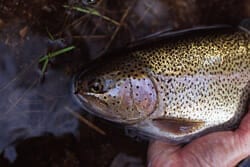
Fly-fishing tips for Davidson River, NCChironomids are the single most abundant insects throughout the Davidson, and the hatchery stretch is rife with them. Anglers hoping for success on this section need size-18 through -28 midge patterns and spools of 6X and 7X tippet. A standard hatchery-stretch rig starts with an olive, cream, or red midge larva pattern weighted with a few microshots, and a midge pupa dropper. Seine the drift to determine which colors and sizes of midges are most abundant. San Juan Worms, Glo-Bugs, and small Green Weenies make good point flies.
Trout in the hatchery stretch don’t seem too spooky, and often allow anglers to approach within a rod’s length. Such behavior is easily explained: if the fish stopped eating every time a human came by, they’d starve to death. However, just because they don’t shy away from anglers doesn’t mean the trout are not on guard. The most successful anglers keep a low profile, make few false casts, use long tippets, and shun large, bright strike indicators. Drift flies directly down each trout’s feeding lane—if you’re off by an inch to either side, keep trying until you bump the fish on die nose with the fly. Change flies often.
Below the hatchery, the Davidson enters an area known as Horse Cove, a wide floodplain of beaver ponds and grassy meadows where the river slows down into long slicks divided by stretches of pocket water. Pools with names like Lake James Hole and Roving Indian Joe Hole hold plentiful rainbows averaging 10 inches, with a few wily brutes up to twice that size. Slow-moving water allows fish to more closely inspect flies, so use patterns with built-in movement: rubber-leg beetles, Soft Hackle Pheasant Tails, or San Juan Worms. As usual, a midge larva or pupa dropper often outfishes any point fly.
Horse Cove is my favorite stretch of the Davidson for fishing streamers, especially when the water runs off-color from heavy rains. I target undercut banks, downed timber, rock walls, foamy eddies, and the tails of the bigger pools, varying my retrieve, but usually stripping short and fast to help fish locate the fly in dirty water. Black Wool Head Sculpins and white Zonkers are top patterns. If those fail, dead-drift a white Woolly Bugger below a yarn indicator to imitate a stunned baitfish. One of my biggest Davidson browns—a hook-jawed, 24-inch beast—fell to such a ploy several autumns ago. He was sitting below a logjam, waiting patiently in the murky backwash.
Despite such occasional good fortune, don’t travel to the Davidson expecting to catch a huge trout. Kevin Howell, who owns Davidson River Outfitters, literally grew up on the river’s banks, fishing at the feet of his father and uncle. One year while guiding, Howell spotted a monster brown that spooked from a run, and he marked its location. For three years, he watched the giant fish move between different feeding lies, depending on the water level. Finally, in 2001, he hooked and landed the 9-pound fish on a black Bunny Leech. He advises visiting anglers to “go early, stay late, fish hard.”
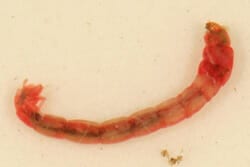
The Lower River
About half a mile below Horse Cove, the Davidson meets Looking Glass Creek, which itself offers miles of pocket water and plunge pools within easy reach of U.S. Highway 276. Known for its 100-foot waterfall and popular rock waterslide, Looking Glass Creek is also a great place to avoid the Davidson’s crowds and snooty fish. Below the Looking Glass confluence, the Big D widens considerably and features long, smooth runs and wide, glassy pools. The smooth surface magnifies mistakes made by anglers, and demands long tippets, slack-line casts, and skilled mending.
Most anglers fish nymph patterns through the deepest, troutiest-looking portions of these pools, including the broken water above and the drop-offs immediately below. These areas certainly hold trout, but newcomers often bypass the best holding lies by wading right through them on their way to the obvious hot spots. Don’t neglect the shallow edges, especially where even a slight ribbon of current washes over cobblestone. Extremely large trout sit on the margins in water barely able to cover their backs, and you can entice them with a size-20 Parachute Adams if you don’t spook them first by pushing waves while wading.
For dry-fly purists, the lower Davidson is pure nirvana. Decades-long monitoring by the North Carolina Division of Water Quality shows that many pollution-intolerant mayflies, including four Drunella species and seven Baetis species, thrive here. Size-18 through -22 Parachute BWOs or olive Comparaduns are good imitations of these foul-weather-fan mayflies, and a Rusty Spinner in the same sizes often fools large fish at dusk in places like Coontree and Shut-in Pool. Clinger mayflies such as Yellow Quills and Light Cahills also abound, making creamy yellow parachute-style patterns good searching flies from May through August.
Winter and early spring, before the crowds arrive, are my favorite times to pursue fish on top. On most sunny days, midging fish can be found in the tails or back eddies of the larger flats. The BWOs and Mahogany Duns of March and early April really get the attention of the larger fish, which seem to relish cripples and emergers more than the duns.


By far the river’s biggest star is the Green Drake, which traditionally shows up around Memorial Day on the lower river. In 1987 and 2004, Green Drake populations suffered from floods that washed out their preferred silt habitat, but there are still a few to be found. The river is also home to a little-known population of huge Litobrancha recurvata mayflies.
Substantially larger and darker than the size-8 Green Drakes, the borrowing Litobrancha nymphs prefer the same soft-bottomed habitat. Encountering either hatch is a hit-or-miss proposition, often requiring many fruitless nights before finally hitting pay dirt.
Anglers love mayflies, but caddisflies far outnumber them in the lower section. Abundant caddisflies include the net-building Cinnamon Caddisfly (Ceratopsyche), Little Olive Caddisfly (Cheumatopsyche), and Great Gray Spotted Sedge (Arctopsyche). For the adult net spinners, try an Elk Hair Caddis; the larvae and pupae are nicely imitated by an olive or ginger Glass Bead Larva and a Deep Sparkle Pupa, respectively. If you see trout flashing below the surface when adult caddisflies are flitting about, try swinging DSPs or Poopahs on a sinking-tip line.
The lower mile of public water on the Davidson, from Avery Creek to the former Ecusta plant intake, is heavily stocked to appease tourists and campers in the adjacent Davidson River Campground. The lower D receives 1,100 trout (browns, rainbows, and brookies) per month from March through August. Anglers are allowed to keep seven fish per day, with no size restriction.
Amazingly, the stocked portion of the Davidson doesn’t get much traffic from fly fishers. Maybe they don’t want to consort with the worm-dunking crowd, or perhaps they think that getting skunked on wild trout water is more honorable than catching a bunch of stockers. Either way, they’re missing out. Granted, the lower D can seem like one long flotilla of tubby tubers during summer months, but hatchery fish don’t really care. They move up into the riffles or under the canopied shadows and let the masses float by. They’ll still eat size-16 Tellico Nymphs and foam hoppers with gusto.
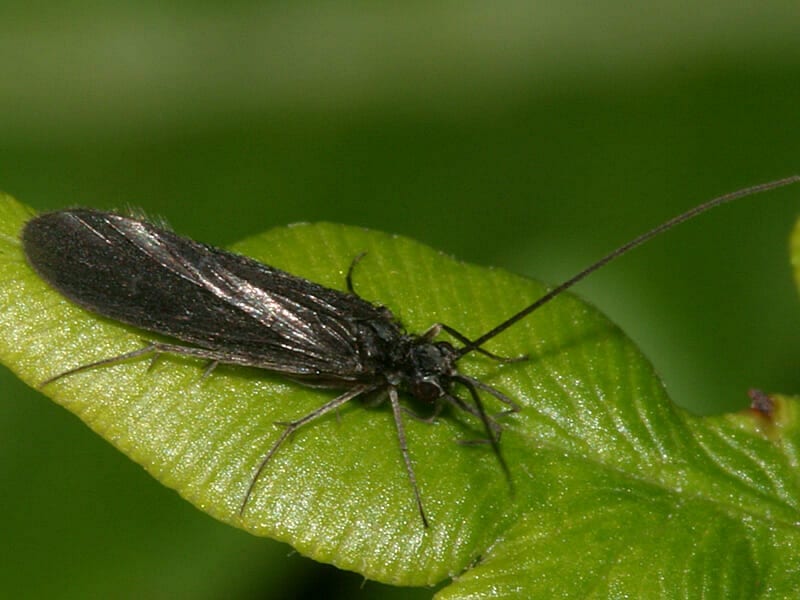
Challenges
Although it ranks as one of the region’s cleanest streams, the Davidson faces increasing problems with sediment, most of which emanates from Forest Road 475, eroded trails, and hurricane-damaged banks. Trout Unlimited’s Pisgah Chapter, in cooperation with the U.S. Forest Service, Brevard College, and the local Rotary Club, has been assessing the river’s biotic life, stabilizing banks, and fixing eroded trails in the middle and lower Davidson. However, local conservation groups are most concerned about a Forest Service plan to pave and widen FR475, which transects the river’s headwaters across highly erodible bedrock.
Despite these issues, the Davidson remains a highly prized and productive trout stream, and one of the best in the entire region. It offers something for fly fishers of every bent, from productive roadside fishing to highly challenging match-the-hatch action for large, well-educated rainbows and browns. Add a healthy dose of forested scenery and it’s easy to succumb to the Davidson’s Southern comfort.
Headwaters Outfitters Operates under permit by the Pisgah National Forest
“In accordance with Federal law and the U.S. Department of Agriculture (USDA) policy, this institution is prohibited from discrimination on the basis of race, color, national origin, sex (in education and training programs and activities), age, disability, or retaliation. (Not all prohibited bases apply to all programs.) If you require this information in alternative format (Braille, large print, audiotape, etc.) contact USDA’s TARGET Center at (202) 720-2600 (voice and TDD).
If you require information about this program, activity, or facility in a language other than English, contact the USDA agency responsible for the program or activity, or any USDA office.
To file a complaint of discrimination, write to USDA, Director, Office of Civil Rights, 1400 Independence Avenue, S.W., Washington, DC 20250-9410, or call (866) 632-9992(voice). TDD uses can contact USFA through local relay or the Federal relay at (800) 877-8339 (TDD) or (866) 377-8642 (relay voice users).. USDA is an equal opportunity provider and employer.”
